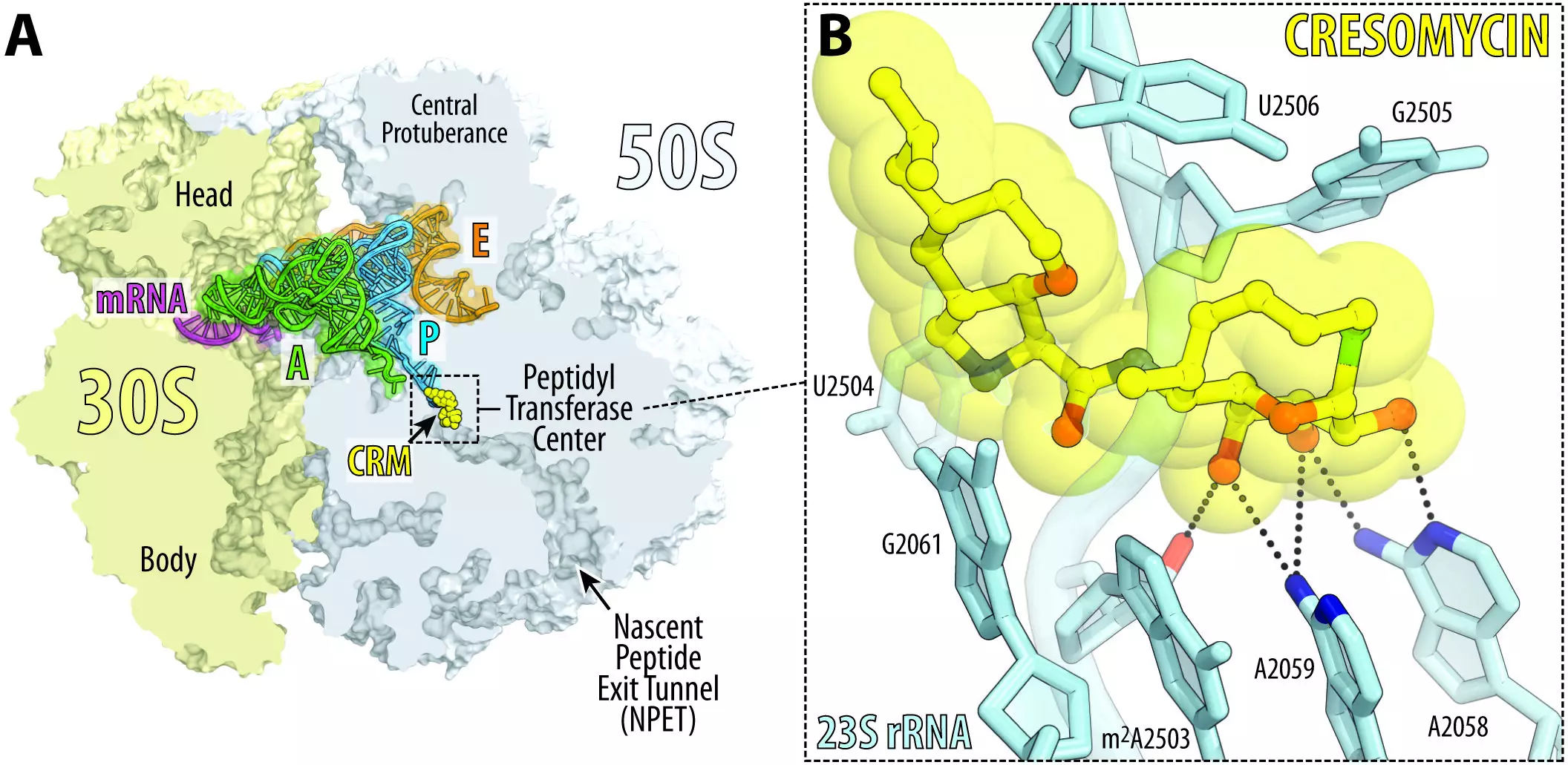Antimicrobial resistance has become a pressing global issue, rendering many conventional antibiotics ineffective and posing a significant threat to public health. However, a groundbreaking discovery by Harvard researchers offers hope in the fight against drug-resistant bacteria. Led by Andrew Myers, a team of scientists has developed a novel antibiotic compound called cresomycin, which shows remarkable efficacy against a wide range of drug-resistant strains. This article explores the potential of cresomycin in overcoming antimicrobial resistance and its implications for the future of antibiotic research.
Traditional antibiotics have long relied on their ability to disrupt the function of bacterial ribosomes, essential machines responsible for protein synthesis. Unfortunately, some bacteria have developed resistance mechanisms that prevent these drugs from working effectively. Cresomycin, on the other hand, boasts an improved binding affinity to bacterial ribosomes, enabling it to overcome shielding mechanisms employed by drug-resistant strains. By engineering the compound into a rigidified shape resembling the ribosomal target, the researchers have achieved a stronger grip, enhancing its efficacy in combating bacterial infections.
A Synthetic Breakthrough
Unlike most antibiotics, which are semisynthetic compounds derived from naturally occurring substances, cresomycin is entirely synthetic. Inspired by the chemical structures of lincosamides, the Harvard team achieved chemical modifications that were previously inaccessible through conventional means. This fully synthetic approach opens up new possibilities for the design and development of antibiotics, allowing researchers to envision innovative molecular structures and mechanisms of action. By harnessing the power of organic synthesis, the team at Harvard remains almost limited only by their imagination in their quest for new antibiotics.
Fighting Resistance Mechanisms
One of the major obstacles in combating antimicrobial resistance is the development of resistance mechanisms by bacteria themselves. Some strains express genes that produce enzymes called ribosomal RNA methyltransferases, which effectively block the action of ribosome-targeting antibiotics. To circumvent this challenge, the Harvard researchers designed cresomycin with a pre-organized shape that closely mimics its binding target on the ribosome. This unique quality allows the compound to have a stronger and more stable interaction with the ribosome, negating the efforts of resistance mechanisms employed by bacteria. The novel approach of pre-organizing the drug for ribosomal binding offers a promising solution to the problem of antibiotic resistance.
The development of cresomycin was made possible through component-based synthesis, a revolutionary method pioneered by the Myers lab at Harvard. Unlike traditional drug discovery processes, which often involve synthesizing and testing one target molecule at a time, this modular and fully synthetic system allows the researchers to build and evaluate hundreds of target molecules simultaneously. This accelerated drug discovery process has significantly reduced the time required to identify and study potential antibiotics. By pre-building molecular components of equal complexity and bringing them together at late stages, researchers can compare and contrast the efficacy of various compounds, ultimately selecting the most promising candidates for further development.
The Significance of Antibiotics
Antibiotics have long been the cornerstone of modern medicine, enabling the successful treatment of bacterial infections and playing a vital role in various medical procedures. However, the rise of antimicrobial resistance threatens to unravel the progress made in healthcare. Drug-resistant bacteria claim the lives of over a million individuals globally each year, underscoring the urgent need for innovative solutions. The discovery of cresomycin and its potential to overcome antibiotic resistance mechanisms signals a significant step forward in the battle against superbugs.
In the fight against antimicrobial resistance, Harvard researchers have developed a groundbreaking antibiotic compound called cresomycin. This fully synthetic molecule demonstrates remarkable efficacy against drug-resistant bacterial strains and offers a promising solution to the global health crisis caused by superbugs. By enhancing the compound’s binding affinity to bacterial ribosomes and utilizing component-based synthesis, the researchers have revolutionized the process of antibiotic development. While further studies are necessary to determine its safety and effectiveness in humans, cresomycin represents a crucial breakthrough and a glimmer of hope in the ongoing battle against superbugs.


Leave a Reply